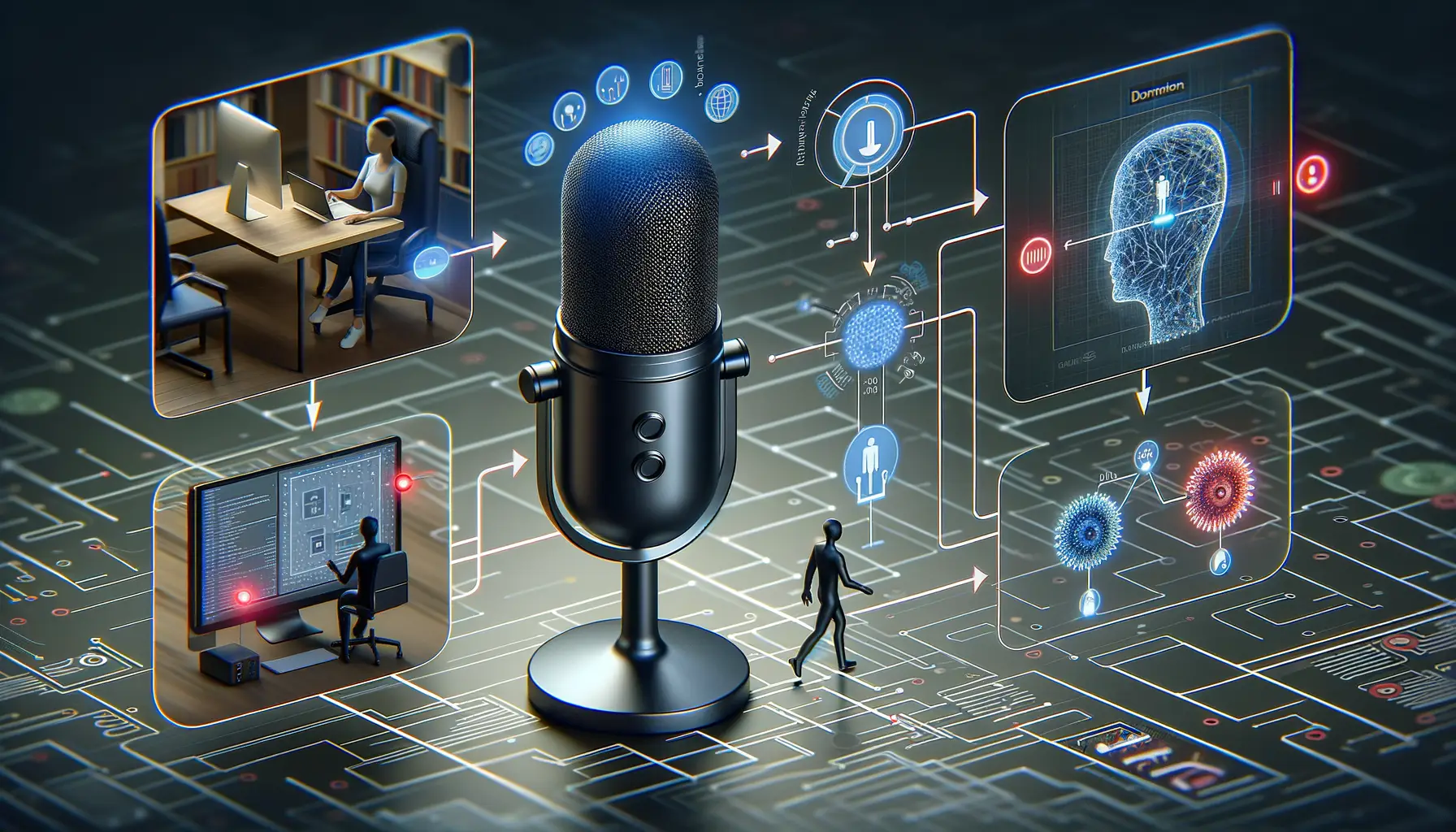Introduction to AI and Voice-Activated Applications
The Magic of AI: Your Personal Assistant in the Digital Realm
Imagine a world where your apps don’t just respond—they *understand* you. That’s the transformative power of Artificial Intelligence (AI) paired with voice activation. It’s like having an invisible, ever-patient butler who knows exactly what you need, just as you utter the words. Forgot to add milk to your shopping list? No problem—speak it aloud and voilà, it’s done.
At its core, AI processes your words, interprets their meaning, and takes action faster than your thumbs can text. This isn’t about barking commands into a void; it’s about creating seamless interactions that feel human, even when talking to a machine. Just think of how Siri, Alexa, or Google Assistant have become part of everyday life. They’re not gadgets; they’re companions lurking in your phone, smartwatch, or speaker, quietly making life easier.
Why You’ll Fall in Love with Voice-Activated Tech
Let’s be real: navigating apps manually is so 2015. Here’s what makes voice-powered AI irresistible:
- Convenience: Hands tied up? Let your voice do the heavy lifting, whether cooking or driving.
- Accessibility: Inclusive design ensures no user feels left behind, including those with physical or visual impairments.
- Speed: Speaking is often faster than typing—ask, and it’s done.
Voice-activated applications aren’t just tools—they’re game-changers.
Key Benefits of Integrating AI-Driven Voice Features in Apps

Transforming User Experiences with Voice AI
Imagine asking your app for tomorrow’s weather, and it responds in seconds with a warm, human-like tone. That’s the magic of integrating AI-driven voice features. It’s not just tech—it’s an entirely new way for users to interact with their devices. By swapping clunky menus for seamless voice commands, you’re creating an experience that feels intuitive and even a little futuristic.
Take, for example, someone driving through rush-hour traffic. Instead of fumbling with buttons or squinting at the screen, they can simply say, “Find the nearest gas station,” and voilà—the app delivers results without missing a beat. It’s convenience at its finest.
Why Your App Needs to Speak Up
Integrating voice tech does more than save time—it can leave users saying, “Wow!” Here’s how:
- Inclusivity: Users with disabilities benefit from hands-free operation, expanding your audience reach.
- Personalized Experiences: AI learns your users’ preferences, like knowing Lisa always orders a latte from her favorite café.
- Speed and Simplicity: No need to navigate menus; tasks are completed instantly with just a few words.
It’s not just about functionality—it’s about making your app feel like a trusted assistant, ready to help at any moment.
Steps to Implement Voice-Activated AI Features

Blueprint for Seamless Voice-Activated AI Integration
Ready to bring your app to life with voice? Let’s break it down step by step, so you can go from an idea to an intelligent assistant whispering (or shouting) in your users’ ears.
1. Choose the Right AI Platform: Start with a solid foundation. Tools like Google Dialogflow, Amazon Alexa Skills Kit, or IBM Watson offer robust frameworks. Think of them as your Lego set, but for creating voice magic.
2. Dive Into User Intent: What do your users *actually* want to say to your app? Map out potential commands and questions they’ll toss at your interface. This is where brainstorming gets exciting—think beyond “play music” or “check weather.”
3. Train Your AI: Feed it real user phrases, slang, even emojis! For example, if someone says, “Yo, what’s the temp like today?” your AI should know they’re not asking for a time machine to the Ice Age.
- Fine-tune Natural Language Processing (NLP) models.
- Test with diverse accents and speech patterns.
4. Code and Test Relentlessly: Build your APIs, integrate voice recognition tools, and then… break things. No, really—test your app until every corner is flawless.
Make Users Feel Heard (Literally)
While the tech side is crucial, remember this—your app isn’t just taking commands; it’s building relationships.
5. Focus on Micro-Responses: Add personalized responses that feel human. Instead of a robotic “Command not recognized,” try: “Oops, I didn’t catch that! Could you say it again?” Small tweaks make big emotional impacts.
6. Privacy Isn’t Optional: Be transparent. Display clear settings where users can control what’s recorded or stored. Trust is the glue to loyal customers.
No one ever fell in love with generic. Infuse your app with personality, empathy, and attention to detail at every level. Voice is personal—treat it that way.
Best Practices for Designing Voice-Activated User Interfaces

Crafting Human-Centered Voice Interactions
Designing a voice-activated user interface isn’t just about slapping on a microphone icon and calling it a day. It’s about creating something that feels less like a machine and more like a conversation with a trusted friend. Think about the last time you used a voice assistant—did it *really* understand you, or was it frustratingly robotic? That gap between “good enough” and “wow, this gets me!” is where great design lives.
Start by prioritizing **natural language processing**. Users won’t always speak in perfect commands—they might ramble, ask questions mid-thought, or toss in a “uhm…” before answering. Your system needs to adapt to those quirks.
Here are some essential pointers:
- Clarity is king: Responses should feel clear and concise, avoiding overly technical jargon. Keep it human.
- Offer gentle guidance: Add subtle cues like, “You can say, ‘Play relaxing music,’” to nudge users in the right direction.
- Make mistakes painless: If your app mishears a command, respond gracefully. Humor can even turn a mistake into a delightful moment!
Anticipating User Needs
A powerful voice UI doesn’t wait for commands—it anticipates them. For example, imagine a fitness app that says, “Would you like to start your yoga session now?” at 6 pm when it knows you usually work out. Personalization like this transforms utility into connection.
And don’t forget inclusion! Not all users will sound alike—accents, speech patterns, or even background noise can add complexity. Using AI-powered voice training, apps can learn and adapt to the beautiful diversity of how people speak. Now that’s forward-thinking design.
Challenges and Solutions in Building Voice-Activated Features

Overcoming the Puzzle of Accents, Dialects, and Natural Speech
Voice-activated features may feel magical, but creating them is no walk in the park. One major challenge? Understanding diverse ways people speak. Think about it—how different is a Boston accent from a Texan drawl? Or someone chatting in English as their second language? Your app needs to grasp not just words but *how* they’re said.
The solution? Lean on **Natural Language Processing (NLP)** models trained on large, diverse datasets. Companies like **OpenAI** and **Google** offer pre-trained solutions that simplify this process. But don’t stop there—test your app with real users across regions and age groups. This feedback isn’t optional; it’s your secret weapon to perfecting speech recognition.
And let’s not forget how humans love to add “uh” or “like” in sentences. Teach your app to handle these filler words gracefully, so users feel understood, not judged.
Handling the Heavy Lifting: Real-Time Processing
Real-time voice processing can be a beast. It demands lightning-fast responses while juggling tasks like noise cancellation, transcription, and semantic understanding.
Here are three practical fixes:
- Integrate edge computing to process voice locally instead of relying solely on the cloud.
- Optimize ML algorithms specifically for low-latency performance.
- Prioritize hardware compatibility to ensure smooth processing on various devices.
By merging clever tech with relentless testing, those “impossible” hurdles become stepping stones to a flawless user experience.



